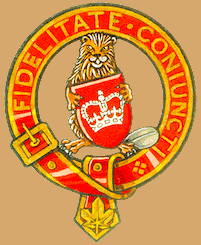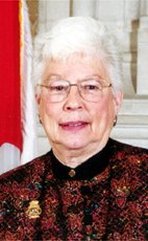profile individual or someone at the center of attention. While
throughout history this has been the norm for various reasons
monarchs have on occasion traveled incognito among their
subjects. These reasons ranged from security, to fact-finding
missions, to idle amusement. And since these excursions were
meant to be secret it can be difficult sometimes to tell which
stories are true and which are merely myth. Monarchs would
also sometimes use an alias not so much as a disguise but as a
'polite fiction' to avoid forcing the host to perform all the
grand state welcome ceremonies they would have to for a high
status guest. While equally interesting these cases have been
left for a later post. So without further delay let us go through
this list (in no particular order) of the top 10 royals who
traveled incognito.
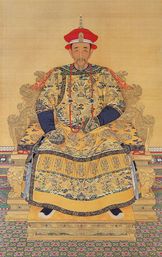 Kangxi Emperor
Kangxi Emperor Emperors of China
The Kangxi Emperor was in many ways
one of China's most effective emperors.
Reigning from 1661 to 1722 he would
establish an extended period of stability,
cultural development, and wealth after
years of war and chaos. Less known is
that he also disguised himself as a Han
Chinese merchant on at least one
occasion.
As the story goes the Kangxi Emperor decided to test the
guards assigned to the Great Wall to see if they would let him
into Manchuria (which the Han Chinese were banned from
entering). After several attempts to persuade and bribe the
guards they hit him and shooed him away. Impressed, the
Kangxi Emperor revealed his true identity as he wished to
reward the diligent guards. Unfortunately, the guards were so
horrified that they had unwittingly struck their emperor that
they committed suicide.
The Kangxi Emperor's grandson (the Qianlong Emperor)
would continue the family tradition. Disguised as commoners
him and some servants would slip out of the palace to
discover what the people truly thought of their rulers and
what their concerns were. On one such occasion the disguised
Qianlong Emperor served tea to one of those with him. One
would be expected to kowtow after receiving such an honour
from the emperor. It would also completely blow their cover.
Thinking fast the servant tapped his knuckle on the table with
the middle knuckle slightly extended to represent the head
and shoulders of a person performing the kowtow. This 'finger
kowtow' remains a feature of Chinese Tea Culture to this day.

of Sweden
King Charles XI ruled Sweden
from 1660 to 1697. Charles XI
restored Sweden's finances,
established royal absolutism,
and restructured the military
during his reign. Charles XI
also travelled through his realm extensively and this is likely
what led to the legend of the Gråkappan, The Grey Cloak.
It is said that King Charles XI would wear a grey cloak to hide
his royal uniform as he investigated whether local officials
were corrupt and oppressing the people. If evidence of guilt
was found he would throw off the cloak in a dramatic fashion
revealing his true identity.
It is interesting to note that in the old Norse mythology the
god Odin would sometimes put on a similar act. It is possible
the king gained inspiration for the idea from the myth. It is
also possible, due to the lack of hard evidence of King Charles
XI actually travelling as the Gråkappan, that the Odin myth
became attached to the king for whatever reason. If this all
sounds somewhat familiar that may be because J.R.R Tolkien
based Gandalf partly on the myths of Odin travelling
incognito.
 Gold coin from the Sultan's reign
Gold coin from the Sultan's reign Riayat Shah of Malacca
The monarchs I have discussed so
far took at least some risks in
going under cover. But the
monarch I'm about to talk about was probably safer under
cover than in his own court. Sultan Alauddin Riayat Shah
ruled Malacca from 1477-1488. He faced challenges from his
brother who believed he should be sultan, his two wives who
each fought to have their own sons named heir, and the
Mamak people who were growing in power in relation to the
Malays.
Despite this the sultan would sometimes go out secretly at
night to check on the well-being of his people. On one such
occasion he even chased after a thief himself. Sultan Alauddin
Riayat Shah had a reputation as a just and fair ruler which
perhaps inspired these secret inspections or perhaps were a
result of them.
Sadly, he is also reported to have died under suspicious
circumstances. It is rumoured that his brother, second wife,
son, brother-in-law, and a couple others all had a hand in his
death. Perhaps he was safer inspecting the streets at night
after all.
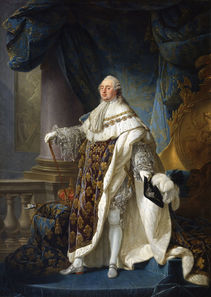
France
Not all cases of monarchs travelling
incognito were successful. This is
especially true if a monarch was not
used to it. No one believed for a
minute that Peter the Great was
just an ordinary guy and Richard
the Lionhearted of England only
made it half way across Europe
before being recognized. But no
failure at travelling incognito had
such a profound effect on history as when an indecisive King
Louis XVI of France had to try his hand at it.
The French Revolution had several stages with each new stage
being more radical than the last. The king was slowly
becoming a prisoner of the revolution. This was especially
true after he was forcibly moved from the Palace of Versailles
to the Tuileries Palace in Paris. The king had become
increasingly indecisive to the point of paralysis. This left his
queen, Marie Antoinette, to make important decisions on his
behalf.
The escape plan itself was simple enough. At Montmédy
General François Claude de Bouillé had built up a sizable
force loyal to the king. If he could make it there he would have
more room to maneuver politically. To this end the king,
disguised as a valet, and queen, disguised as a governess,
along with the entire immediate royal family joined in on the
flight from Paris at midnight of June 21st, 1791.
Problems developed almost immediately. The king did not
wish for the royal family to travel seperately and thus they
used a large, conspicuous, slow-moving coach pulled by six
horses rather than two smaller, and quicker, coaches. A
postmaster of Sainte-Menehould named Jean-Baptiste Drouet
recognized the king apparently from his portrait on a French
coin. The group were captured in Varennes, only 31 miles
from their goal.
The flight from Paris had been intended to restore royal
authority but its failure destroyed support for king and
monarchy in the capital and hastened the kings journey to the
guillotine.
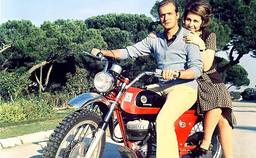 Photo Credit: Reginald Davis/Rex
Photo Credit: Reginald Davis/Rex of Spain
King Juan Carlos I has had an
interesting life. Born in exile
in Italy it initially looked like
he would never be king. But
when Franco restored the
Spanish Monarchy it looked instead like he would have to play
the role of figurehead to whatever strongman succeeded the
dictator. And when Franco named Juan Carlos I as his
successor it looked likely that the young king would continue
the strongman's policies (itself a form of political incognito).
And when the king instead led his country's democratization
it looked like it would all be undone by a military coup. Juan
Carlos I overcame that challenge too. He was crafty and he
survived. He even had time to help out a stranded biker or
two.
King Juan Carlos I has a passion for motorbikes. Moreover,
he likes to ride his bikes while incognito. Admittedly this is
rather easy with the typical motorbike helmet. His frequent
outings has produced stories (or urban legends) of bikers
stranded on lonely back roads being brought canisters of
petrol by their king.
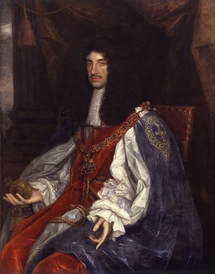
England
As King Louis XVI's example above
shows, monarchs sometimes used
disguises in times of very real peril.
It was the same for King Charles II.
After losing the Battle of Worcester
to the Parliamentarians under
Cromwell in 1651 Charles became a
wanted man. For six weeks the
king made his way across England
on his way to relative safety in Europe. Charles had problems:
at 6'2" tall he literally stood out in a crowd, his clothes were
obviously upper class, and his accent was out of place. Luckily
Charles still had allies. The Catholics especially helped him
move from place to place in secret. Arriving at the White
Ladies Priory in Shropshire he was met by George Pendrell
who disguised Charles as a woodsman giving him a leather
doublet, a pair of green breeches, a jump-coat, an old grey
greasy hat without a lining, and a coarse linen noggen shirt.
Charles at this point still had a sizable group with him but it
was decided that from that point it would be safer to travel
almost alone. While still near the White Ladies Priory a
company of local militia stopped to check if anyone had seen
the fugitive. They were told the king had moved on sometime
before which the soldiers believed. George Pendrell and his
brother Richard taught Charles to speak with the local accent
and how to walk like a labourer.
Charles would later take on another disguise as a servant and
take the alias 'William Jackson'. The whole story reads like a
Hollywood thriller and by rights it should be made into one by
now. The six weeks the future Charles II spent on the run
would have a major effect on his outlook for the rest of his life.
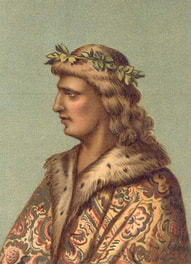
of Hungary
King Matthias Corvinus ruled
Hungary with great ability from 1458-
1490. So much so that his reign is
considered by some to be an
Hungarian golden age. His
accomplishments include: reforms to
the administration of justice, the
promotion of talented individuals
regardless of social standing,
patronage of art and science, and a generally successful
military career. He also weakened the power of the barons, a
perennial issue in Medieval Europe.
These accomplishments cost money which required greatly
increased taxation. The burden of this taxation fell largely on
the peasants. Still, while the peasants were none too happy
about this state of affairs it seems they at least appreciated the
greater access to justice. After his death "Dead is Matthias,
lost is justice" even became a popular saying.
Like many kings with great accomplishments myths and
legends abound regarding King Matthias Corvinus. It is said
that he traveled among his people in secret to sound out
public opinion. Several notable folktales have the king
undertaking great risks while in disguise.
One such tale states that during a campaign against the Turks
he visited the enemy's came with a single companion, both
disguised as peasants. For the entire day Matthias sold food
outside the Turkish general's tent. In the evening he returned
to safety. He then wrote a letter to the general to tell him he
had explored the Turkish camp and naming the dishes he
served as proof. The general was greatly unnerved.
Another tale has the king entering Vienna while it was still
under siege to explore the city. While taking a rest the rumour
spread that Matthias was within the walls. The king showed
no sign of alarm and simply walked out of the city. The story
continues that when the Hungarians had taken the city they
set up a statue where he had sat and rested.
Perhaps it is not surprising that Matthias Corvinus is
regarded as one of the 'Sleeping Kings' who will return to
lead his people to new greatness.
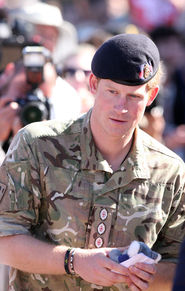 Photo Credit: Eva Rinaldi
Photo Credit: Eva Rinaldi United Kingdom
In Medieval times it was considered
desirable for the king and other
important persons to be easily
identifiable. This was because
captured royals and nobles could be
ransomed so it was best not to kill
them. Hiding amongst the masses of
infantry was a good way to get yourself
accidentally killed. The invention of
the firearm slowly changed this
system to the point a royal standing
out on the battlefield was a very, very bad thing.
So when Prince Harry was deployed to Afghanistan in 2007
care was taken to shield his identity. While modern combat
gear hides many identifying features it was also necessary to
hide where exactly the prince was serving. As such both the
British and Canadian authorities placed a media blackout on
Prince Harry's deployment information. This blackout was
not respected by a German newspaper and an Australian
magazine which lead to him being withdrawn from the front
lines. It was revealed later that while deployed he helped
Gurkha troops repel an attack from the Taliban in Helmand
Province.
Prince Harry would return to Afghanistan a few years later as
an Apache helicopter pilot. Since attack helicopters are always
priority targets it was determined Prince Harry's presence
would pose no additional danger to his comrades. Making this
an odd an example of 'anonymously standing out'.
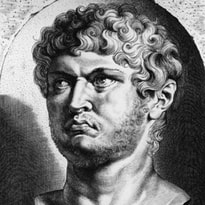
Rome
The reign of Emperor Nero is
sometimes read as a teenager with
too much power. This probably does
a disservice to the average teenager
but it is hard to deny Nero behaved
badly. Even if you discount the
pervasive bias his contemporaries
had for him he still cannot be seen in a wholly positive light. It
also makes separating truth from myth about Nero's own
incognito episodes hard to do.
As the story goes Emperor Nero (and friends) would go out
late at night to make catcalls at women and get into fistfights.
One such fistfight left the Emperor with a black eye and when
the man responsible found out what he had done he promptly
committed suicide.
Another story has Nero receiving a severe beating from a
senator for the mistreatment of his wife. The senator likely
knew who he actually was but pretended not to since Nero
would have to admit to what he was doing in order to punish
him. After his beating Nero is said to have had guards follow
him at a distance with orders to intervene if things got out of
hand.
Emperor Nero's late night escapades make more sense when
you consider that for much of his reign those around him
sought to control his actions. These late night trips being a
needed, but unhealthy, release.
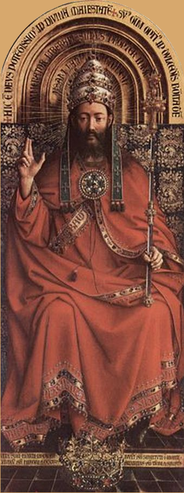
Going in the complete opposite
direction from Nero we have the final
monarch on this list: Jesus. While the
monarchs on this list have had a mix of
noble and ignoble reasons for going
incognito only one can lay claim to
wanting to save all of humanity.
Jesus consistently told those he healed
and his disciples not to tell people who
he really was (sometimes with limited
success). The reasons were twofold. 1.
It would attract crowds of people
seeking healing. While healing was a
part of his ministry it was secondary to
his preaching of the Kingdom of God.
Large crowds pressing around him
looking for healing but with little
interest in what he had to say would be
counter-productive and limit his ability to travel. After one
such crowd formed Jesus headed out by boat across the Sea of
Galilee. 2. His disciples were not ready yet. And given the
trials they would face in proclaiming his kingdom he needed
the private time to instruct and ready them for their future
task.
Concealing his identity also served another purpose: it
removed complicating factors. If the religious leaders had
come to believe he really was the awaited Messiah they would
not have sought his death. This is a problem as Jesus needed
to die. In this way keeping his identity secret was the easiest
means of accomplishing his mission.
The scripture also includes another instance of Jesus traveling
incognito. After his death and resurrection he appeared to two
of his followers as they were on their way to Emmaus. He
walked with them and discussed God's plan but prevented
them from recognizing him. In this instance Jesus seems to
have wanted to offer encouragement to his followers (who
may have begun to scatter after his execution).
Incognito. Thanks for reading.
Loyally Yours,
A Kisaragi Colour
 RSS Feed
RSS Feed
